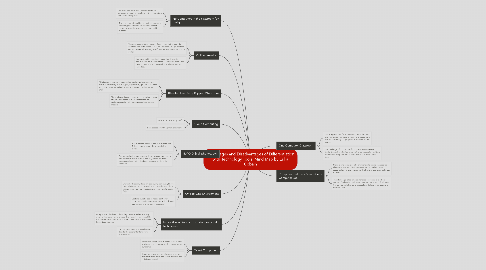Advantages and Disadvantages of Differentiation with Technology Tools: Mind Map by Erika Cobain
by Ms. Cobain

1. One-to-One Environment
1.1. Oh yeah, this is my desk, my pencil, my computer, I have the tools I need to do my work and I don't have to share with anyone. I can personalize it and learn how to use it fully.
1.2. Looking out at a sea of heads bent over computers, no interpersonal interaction, loss of eye contact and human connection.
2. Interactive whiteboards, student responder techniques
2.1. I truly missed this boat. I think they became redundant very quickly. They seem more gimicky than useful sometimes. I like the student responder apps in the BYOD model like Socrative, Infuse Learning etc..
2.2. Each student has a voice and instant data to the teacher for formative assessments.
3. Tablet Computing
3.1. This is not a keyboard, it does not work like a keyboard and I am now getting carpal tunnel syndrome.
3.2. Great for video, images, show me apps and similar student produced video, research and collaborative work.
4. B.Y.O.D. [cell phones, etc]
4.1. Not everyone has one, or a robust data plan. This can create more rifts in the digital divide.
4.2. This saves districts money on devices, they can purchase a few- for the students without and rely on the students (parents really) to bring the latest, greatest tools to the classroom.
5. Cloud Computing
5.1. Where the heck is my stuff?
5.2. I can access everything from anywhere!
6. Blended Learning / Flipped Classroom
6.1. This is what a language arts teacher has been doing since the dawn of time (okay that is slightly hyperbolic), go home, read the story, tomorrow we will talk about it. It works, it makes sense. Duh.
6.2. The challenge is when students do not do the work at home and come to class unprepared or underprepared to ask questions and discuss the material.
7. Online Learning
7.1. The pajama plus! One can work from home, in PJs, with the comforts and distractions of that environment. The plus is that commutes are nil, learning is self directed and the world is your oyster!
7.2. Interpersonal interaction in an authentic way is diminished with the loss of facial and vocal cues. Each person has a voice, but is each voice heard as it is intended?
8. No Computers in the classroom [by design]
8.1. The focus can be student centered with an emphasis on reading development, collaboration and skills development.
8.2. The challenge of teaching in the 21st century is preparing our students for a world in which technology use is expected and essential for success.
9. One-Computer Classroom
9.1. This is a great start for a classroom. It can be used as a workstation for word processing or research, a tool for presenting if a projector is attached to the device.
9.2. The challenge of 1 computer for 35+ students is access. Students may have limited time on the computer, limited time to learn the programs and skills of research without more time
10. Computer Stations / Stand-Alone Computer Lab
10.1. Stand alone computer labs are wonderful scene changes for a classroom teacher, this is the place we go to do Internet research for our projects, or our final writing drafts, or make our movies.
10.2. The challenge is lab time and shared resources in a school setting. Final projects all seem to come due around finals week, this can be a challenge to schedule and share when everyone needs to use.


